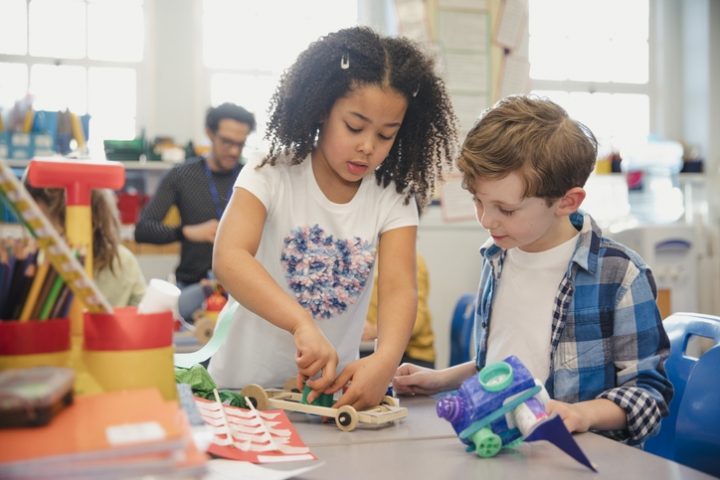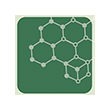Students should generate criteria and constraints for engineering design problems—not just be provided with them

Teachers should open up the process of defining engineering problems, criteria, and constraints to students. This is a crucial aspect of design thinking.
District Staff & PD Providers should seek out and/or create engineering design challenges that allow students to explore and identify the criteria and constraints themselves.
School Leaders should provide time for teachers to plan interdisciplinary projects that ask students to authentically engage in engineering design challenges.
What is the Issue?
A Framework for K-12 Science Education suggests that students at all grade levels should be identifying engineering design problems and developing criteria and constraints. However, in practice, students often receive pre-written criteria and constraints, or begin design challenges without specified criteria or constraints. This tool provides guidance for teachers as they support students to move from a broadly stated design challenge to identifying robust criteria and constraints and developing a detailed understanding of the design problem they are solving.
Authors:
BY KIMBERLY WEAVER, GINA TESORIERO & PHILIP BELL | DECEMBER 2019
Reflection Questions
What broadly-stated engineering design challenges relate to the science concepts & phenomena I am teaching?
What is the least amount of guidance and info I can give students where they still achieve success in the design challenge?
How can I anticipate students’ questions and ideas about problems, criteria, and constraints while remaining open to unexpected ideas?
Things to Consider
When students define criteria and constraints, they must be engaged in clearly understanding problems, stakeholders, and desired outcomes. Robust criteria and constraints ensure students can: (a) evaluate solutions based on what worked, including what was socially, ethically, and technically acceptable, (b) identify which solutions still need improvements, and (c) reveal specific ways to improve those solutions.
Attending to Equity
- Engineering design is never agnostic to context and the scales of justice. Support students to analyze moral dimensions of their design work and identify knowledge beyond science that is needed.
- Students bring unique perspectives on problems and solutions based on their lived experiences and cultures. Allow students a central role in identifying problems, criteria, and constraints to help ensure that their perspectives are included in the engineering task.
Recommended Actions You Can Take
- Before starting a design challenge, anticipate student questions and responses about the problem, stakeholders, criteria, and constraints.
- When using an engineering challenge, like those available at teachengineering.org, consider removing the provided criteria and constraints.
- As you present the design challenge, consider displaying available materials and tools for both building and testing the designs, as these may help spur student ideas and questions.
The steps below provide guidance to actively support students as they define engineering problems and identify criteria and constraints. Although the process presented below is teacher-led, eventually students could lead the process in small groups or on their own.
1. Provide students with a broadly stated design challenge. When selecting design challenges, strongly consider topics that students have some background knowledge or experience with. Here are a couple of examples: (a) engineering hats and (b) designing habitats.
2. Guide students as they think deeply about the design challenge using prompts like: (a) Why is this a situation people want to change or a problem people want to solve? (b) Who wants to change this situation or solve this problem? What do we know about them and their needs and desires? (c) Who will be impacted by how the situation or problem is resolved? How will they be impacted? (d) Is there more than one problem that comes out of this situation? If so, are some problems more important than others? (e) Whose interests are being served in the design work and how the challenge is framed?
3. Guide students as they consider the criteria for success, using prompts like: (a) How will we know if we have solved the problem? (b) Should we try to solve all parts of the problem? Is there a minimum standard to claim success? (c) What will we be able to test or measure? How will we test and measure it? (d) Do different people/groups/clients have different criteria for success? Are some voices more central than others? (e) Are some criteria needs while others are just wants? (f) What trade-offs might be necessary to meet competing criteria and stay within the constraints?
4. Guide students as they consider the limitations or constraints. Teachers will initally need to supply details about constraints, but students should be supported to identify them, and eventually, determine reasonable constraints, such as: (a) time frame, (b) material (type, quantity), (c) budget, (d) sustainability, (e) safety / risk mitigation, and (f) ethical commitments and moral priorities.
ALSO SEE STEM TEACHING TOOLS
STEM Teaching Tools content copyright 2014-22 UW Institute for Science + Math Education. All rights reserved.
This site is primarily funded by the National Science Foundation (NSF) through Award #1920249 (previously through Awards #1238253 and #1854059). Opinions expressed are not those of any funding agency.
Work is licensed under a Creative Commons Attribution-ShareAlike 4.0 Unported License. Others may adapt with attribution. Funded by the National Science Foundation (NSF). Opinions expressed are not those of any funding agency.


 Email Feedback
Email Feedback


